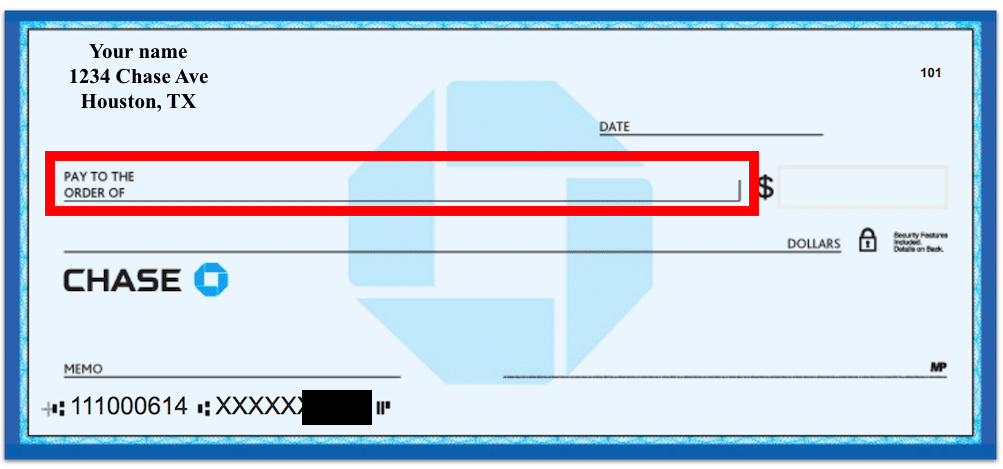There are a few reasons why you would want to write a check to yourself. Typically, you are probably wanting to transfer some money from one account to another or trying to withdraw cash from your account. You might also be up to no good or you actually might be up to a lot of good (I’ll explain later). In this article, I will tell you everything you need to know about writing a check to yourself.
Tip: Check out the free app WalletFlo so that you can optimize your credit card spend by seeing the best card to use! You can also track credits, annual fees, and get notifications when you’re eligible for the best cards!
How to write a check to yourself
If you are not familiar with the different parts of a check I recommended that you read up on those so that you know how to write a check. I know that this might seem like common sense to some people but there are a lot of individuals who never deal with checks and perhaps have never even written one in their life. Heck, I think I have only written a couple of dozen objects in my entire life.
Filling out checks is pretty straightforward but there are some things you need to know (like the difference between writing the dollar amount in words vs putting the amount in the money box). So I recommend checking out that article if you need to.
If you are writing a check to yourself you will actually write out the check to pay to the order of: “Your name.” So if your name is “Random Person” then the check will be made out to pay to the order of “Random Person.”

If you have identifying information on your check (usually in the upper left corner) then this means that your name will appear two times on the check (three if you count the signature) and that is perfectly fine. Some people wonder whether or not it is illegal to write a check to yourself but I can assure you that it is perfectly legal.
Well, that is assuming that you have the funds to cover the check. For example, it would be very illegal for you to write a check to yourself and then try to cash that check if you knew you had no money in your bank account — even if you believed you would have them by the time the check was cleared (this practice is known as “check kiting“).
That is a form of fraud and you could get yourself in criminal trouble so don’t do it!
By making the check out in your name, you will be the only person that is able to deposit or cash this check (there may be exceptions if you are able to assign the check to someone else but that’s another story).
You should be able to cash or deposit this check at your bank or possibly at another bank/institution. Just remember that when cashing a check, you may not have access to all of the available funds right at that moment (it could take a few days for you to get access to all of the funds).
If you need to withdraw cash I would highly recommend that you go much more efficient routes such as using an ATM, visiting a bank, or perhaps even withdrawing cash from a store by making a small purchase (just know that this store will likely impose limitations on your cash withdrawal).
Pay to the order of: Cash
Something else that you can consider is to pay to the order of “Cash.”
This means that instead of making your check out to the named individual you simply put “Cash.” The drawback to this method is that it can be risky because this means that anybody can cash or deposit the check. If you were to lose that check and some random stranger found it on the street they could theoretically cash that check.
Therefore, I don’t recommend that you do this since it could potentially backfire and also because there are just so many easier methods for withdrawing cash.
Related: How to Mail a Check Safely
Alternative transfer methods
There are other ways that you can transfer funds between accounts and I’ll go over some of these below.
Intrabank transfers
If you are trying to transfer funds between separate accounts at the same bank you should just do that electronically. Simply sign into your online banking account and then make a transfer and it will be processed immediately in many cases. This is by far the easiest method to accomplish this task.
ACH transfers
One of the most common methods is to simply electronically transfer funds between financial institutions. This is often done via an ACH (Automated Clearing House) transfer. Many banks will allow you to add an external account and link that account to your bank account so that you can transfer funds between accounts. You can often do this for free, with both small and large financial institutions so always inquire about this possibility.
The big thing you need to know about this method is that sometimes it can take several days up to a week to get the accounts linked. Sometimes you can simply log into the external account and quickly link the accounts but other times they are subject to verification or perhaps even a test deposit that you will use to verify the account.
P2P transfers
Some banks offer ways to expedite the transfer process with P2P transfers.
I am a huge fan of Chase Quick Pay with Zelle. Using this method, if you can instantly transfer funds to a lot of different banking institutions for no fee at all.
There are some limitations to these transfers but they are pretty generous and they even allow you to transfer between business accounts. The recipient will need to sign up with Zelle but that only takes a couple of minutes to do so this is a very easy process.
Alternatively, one of the easiest ways to get funds between accounts is to use a service like PayPal or VenMo. It’s not that difficult to set up an account with these services — you just need to link your routing and account number and have an email address. After linking your bank account you will be able to send and receive funds between banks.
Wire transfers
You can also choose to make your transfer to another account with a wire transfer. Wire transfers will typically incur fees, though. Sometimes these fees can be quite high and you could easily be paying over $20 dollars just to make a simple wire transfer. Some types of bank accounts allow you to make wire transfers for free and those would be premium accounts like Chase Private Client.
Joint bank accounts
If you have a joint bank account it is also possible for you to write a check to yourself or to the other named individual on the bank account. So for example if you were a married couple, let’s say Rick and Bob, Rick could write a check to Bob and Bob could deposit it into another bank account.
Business accounts
If you are a small business owner like myself you can write a check to yourself from your business account. The biggest requirement here is that you need to have the authority to sign off on a check from your business account.
When you set up your bank account you should have also set up who has this authority and if you are doing a business by yourself chances are that you have already automatically done this.
Do keep in mind that it is not a good idea to have a co-mingling of funds so if you are doing this, be sure to document everything very clearly just in case something happens in the future.
Law of attraction
There may be one final reason why you would write a check to yourself…
Many people believe in the law of attraction and do certain things to bring them into existence. In this case, you could write yourself a check for $1 million with the mindset that one day you will be able to cash that. This is famously what Jim Carrey did.
Some people may choose to put a specific date on the check and possibly even something in the memo blank for what they plan on buying. It all just depends on your dreams and aspirations.
I personally am a huge proponent of the law of attraction and think that mindset is everything when it comes to reverse engineering success. Therefore, if this is your type of thing then I say to go for it.
FAQs
Yes, you can legally write a check to yourself but there are some considerations involved in doing so.
Yes, you can cash a check written to yourself but be extra sure you have the sufficient funds to cash it. If you don’t, you could be charged with a crime.
Final word
Overall, it is completely possible to write a check to yourself when filling out a check if you would like. However, as shown above there are a lot of more efficient methods for transferring funds between accounts that could save you a lot of time. Therefore, I would stick to looking into the electronic methods of transfer just to make things easier.
Daniel Gillaspia is the Founder of UponArriving.com and the credit card app, WalletFlo. He is a former attorney turned travel expert covering destinations along with TSA, airline, and hotel policies. Since 2014, his content has been featured in publications such as National Geographic, Smithsonian Magazine, and CNBC. Read my bio.


My friend took in a 4 year old who overstayed his welcome and is now 29-30. My friend, now deceased told his coworkers once that the boy in his late teens upward wrote about $40k checks to himself. The boy’s name was NOT on the checks and the account and my friend put a stop to it all by setting up autopayments from his bank.
My friend has been the victim of low life bullying and just weeks before his death (man in 80’s hit on his bicycle) he mentioned he had just reordered checks.
My question: My deceased friend’s “fake family” may order a fake Death Certificate to enter my friend’s safe deposit box (of course, at Chase). If the boy gets to the box and the proof from the decade old $40k incident (crime never reported to authorities only friends) can he get his hands on the evidence I told him to hide in his deposit box?
Thank you, Daniel.
hey deserve to get the money
I want to write a check to myself for $1,000 I do not have the $1,000 in today however I will in the next day or two would it be okay to postmark the check. And is it legal